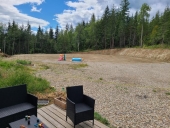





 1
1




"People get out your way, when you're on fire". Richard Prior
 2
2




Work smarter, not harder.
 2
2




Living a life that requires no vacation.
 1
1




The northern Netherlands is definitely under a different scale for hardiness zones than the USDA hardiness zones, as USDA zone 8a never falls below 10° F. The northern Netherlands gets lows well below zero, and would be closer to USDA zone 3, depending on your location relative to maritime temperature influences. Hope that helps everyone compare apples to apples.
 2
2




 1
1




J Grouwstra wrote:
Quote: The northern Netherlands is definitely under a different scale for hardiness zones than the USDA hardiness zones, as USDA zone 8a never falls below 10° F. The northern Netherlands gets lows well below zero,
Zone 3, really? That sounds a lot colder than were I really am!

I make a Maple Syrup instructional movie! Check it out HERE
SKIP books, get 'em while they're hot!!! Skills to Inherit Property
See me in a movie building a massive wood staircase:Low Tech Lab Movie
 1
1




 1
1








"People get out your way, when you're on fire". Richard Prior
 1
1




Brian Rodgers wrote: is there a list of things to do to convert this semi-arid area to productivity? Swales, hugles, irrigation, gray water.
Gardens in my mind never need water
Castles in the air never have a wet basement
Well made buildings are fractal -- equally intelligent design at every level of detail.
Bright sparks remind others that they too can dance
What I am looking for is looking for me too!

 1
1




Pearl Sutton wrote:
Brian Rodgers wrote: is there a list of things to do to convert this semi-arid area to productivity? Swales, hugles, irrigation, gray water.
Bill Mollison (the main founder of permaculture) wrote a book called Permaculture A Designer's Manual, often referred to as Mollison's big black book. There is a whole section on Dryland Strategies (Chap 11, Pgs 308-410.) The book is generally not cheap, I think I had to pay 80.00 for my copy, but it is WELL worth it if you are a reader. It's all the design principles that are taught in the PDCs (Permaculture Design Course.) If you are more a class taking type, look for a PDC in your area, it will probably cover a lot of local strategies. I never realized till just now there a whole forum on Permies just for The Design Manual! Permaculture A Designer's Manual Forum
Pearl Sutton wrote:
Yes, swales will help, especially if you have enough runoff that it's ponding, their job is to hold that water still as it soaks in where you want it. Adding organic material to help build up the soil's water carrying capacity (which is basically what a hugel is) will help hold what you get. Grey water use is always good in dry areas, it's a shame to waste it, and irrigation is more a last ditch technique if you still can't get enough water to hold in your soil. Holding the water in your soil is always better than irrigating. When I lived in NM I got very good at drip irrigating, the problem with that being it doesn't really build up the soil moisture content as much as I wanted, I'd flood irrigate, then drip for a month or so, then have to flood again. The drip was specific for the plant, but the surrounding soil wicked a lot of it away.
Pearl Sutton wrote:
AS far as what plants, the other thing I did was create microclimates. I had things growing that "you can't grow that here!" Oh. Looks like it's doing fine! Microclimates are worth learning about. I was in zone 8b (dry) and not a lot grows there unless you get creative.
![Filename: Summer-rains-continue-front-yard-ground-cover-brush-berms-Sept-2018.jpg
Description: [Thumbnail for Summer-rains-continue-front-yard-ground-cover-brush-berms-Sept-2018.jpg]](/t/92565/a/65057/Summer-rains-continue-front-yard-ground-cover-brush-berms-Sept-2018.jpg)
![Filename: Summer-rains-continue-ground-cover-brush-berms-Sept-2018.jpg
Description: [Thumbnail for Summer-rains-continue-ground-cover-brush-berms-Sept-2018.jpg]](/t/92565/a/65058/Summer-rains-continue-ground-cover-brush-berms-Sept-2018.jpg)
"People get out your way, when you're on fire". Richard Prior
 1
1





|
I carry this gun in case a vending machine doesn't give me my fritos. This gun and this tiny ad:
Support permies and give beautiful gifts to gardeners: permaculture playing cards.
https://gardener-gift.com/
|





